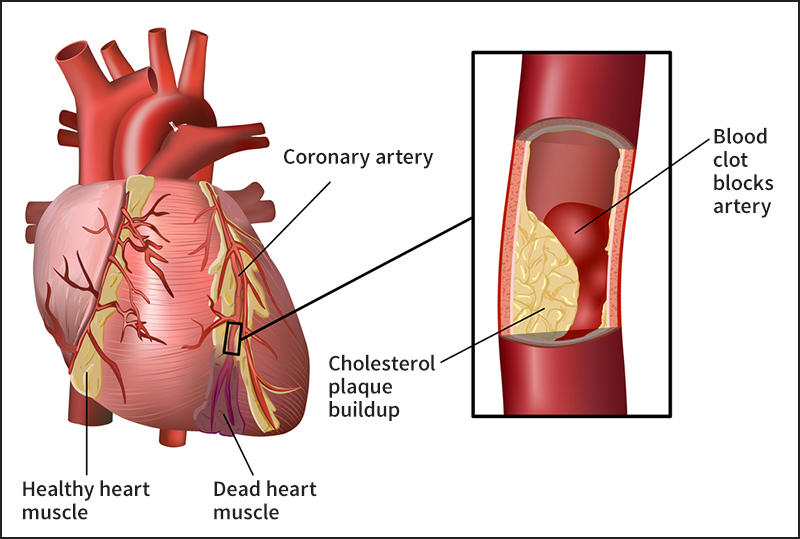Coronary artery disease, abbreviated CAD, is an unhealthy condition of the blood vessels that supply the heart . The coronary arteries supply oxygen-carrying blood to the heart muscle , also known as the cardiac muscle or myocardium. Two main coronary arteries run along the outer surface of the heart. They originate directly from the body’s largest artery, the aorta . Branches of the coronary arteries extend throughout the heart muscle.

Coronary artery disease involves a process commonly known as “hardening of the arteries” or atherosclerosis. In this process, fatty substances called lipoproteins form deposits on the inner lining of coronary vessels. Two of these substances are cholesterol and triglycerides . The deposits also occur on other major arteries, such as the aorta and its branches. These fatty streaks harden over time to form deposits called plaques. The plaques gradually block the coronary arteries.
Coronary artery disease begins as early as childhood. Its progress depends largely on the amount of cholesterol-carrying lipoproteins in the bloodstream. There are two chief types of these lipoproteins: low density lipoprotein (LDL) and high density lipoprotein (HDL). Scientists think that HDL helps remove cholesterol from tissues. High levels of LDL, on the other hand, contribute to CAD. For this reason, LDL is sometimes called “bad cholesterol.” Levels of HDL and LDL are largely determined by genetic (hereditary) factors. Diet and physical activity influence lipoprotein levels. Other risk factors for CAD include high blood pressure, obesity, and smoking.
Tiny particles of LDL migrate from the bloodstream into the lining of coronary arteries, causing inflammation . Such inflammation brings white blood cells , called macrophages, to the area. These cells are part of the body’s immune system. Some of the macrophages are drawn into the arterial lining. There, they absorb excess LDL. Macrophages that have engulfed large amounts of the fatty material are called foam cells. The foam cells sometimes cannot escape the damaged lining and die there, releasing stored LDL. These particles accumulate with other fatty deposits and gradually harden into plaques.
People with CAD may feel chest pain during physical activity. This pain or discomfort is called angina pectoris . It results from a reduced blood flow to the heart muscle that occurs when coronary arteries are blocked with plaque. The pain increases with activity, as the muscle’s need for oxygenated blood rises. The pain typically subsides with rest.
Coronary artery disease is a cause of heart attack . Ongoing coronary artery inflammation may cause a plaque to rupture. The site then forms a blood clot that may block the vessel. Blockage stops delivery of oxygenated blood to a portion of the heart muscle, causing a heart attack.
A healthy lifestyle including a balanced diet and exercise can help protect against coronary artery disease. For many people, however, medical treatment may also be necessary. Treatment of CAD depends on the symptoms and extent of the disease.
